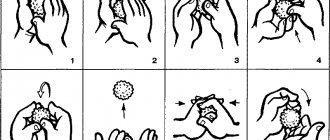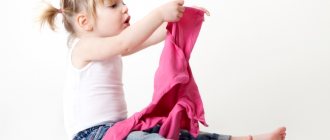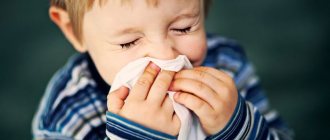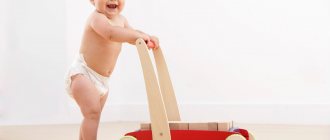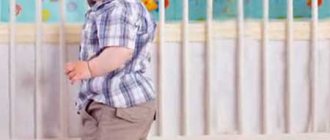When is it necessary?
Massage is used as an auxiliary treatment for bone, muscle, and ligamentous disorders. For preventive purposes, if there are no contraindications, it is recommended for all children. Foot massage helps a child with tone, clubfoot, deformation, flat feet, unsteady or irregular gait.
He:
- activates the development of bones, muscles, ligaments;
- improves tissue nutrition, blood and lymph circulation;
- strengthens muscles, ligaments, increases their elasticity;
- corrects muscle tone.
Foot massage helps the child when walking on tiptoes and removes muscle hypertonicity. The cause of this gait may be due to normal physiological characteristics or serious neurological disorders. Therefore, before doing anything, consult an orthopedist and neurologist to check if everything is fine.
How to do it correctly?
It is better to entrust a therapeutic foot massage to a child prescribed by a doctor to an experienced specialist. Call a massage therapist at home or go to a clinic or medical center.
To prevent various orthopedic disorders, it is important that parents themselves massage the child’s feet and legs every day using video instructions on the Internet. Impact can be exerted not only with your hands. Many babies enjoy walking on special massage mats. According to master classes on the Internet, some mothers make them themselves. Simply sew buttons, rope, pieces of foam rubber and other details to dense fabric.
It is important to massage the feet of small children carefully, carefully, and carefully. After all, their bones are flexible, but their muscles are not yet strong enough.
For the session to go well, the baby must be relaxed, full, and satisfied. Do the procedure in the morning or evening a few hours before bedtime. If the child is upset, crying, did not get enough sleep, or is in pain, it is better to postpone it until another time.
Is it possible to remove the clamp in a child's toes?
Sometimes parents ask if it is possible to remove pinching of a child’s toes, is it necessary to do this at all, or will it go away on its own? The answer is that if a child has a severe neurological diagnosis such as cerebral palsy, then it may not be possible to remove the clamp. If the pinching of the fingers is a result of minor microtraumas of the central nervous system, due to attempts to stand up or walk, then in the vast majority of cases such pinching is eliminated successfully. As for whether it is necessary or not, I believe that this is not even discussed. If there is a need to improve a child’s health, then this must be done.
Author of the article, massage therapist Alexey Matrosov. The article was written for the website happybabymassage.ru, copying it is prohibited!
For prevention
If the child was born full-term, then massage is allowed from 2 months. Up to six months, the main technique is lightly stroking the legs for several minutes. For smooth glide, pre-apply baby oil to the skin.
After 6 months, when massaging your child’s feet, gradually complicate the technique, increase the time and intensity.
Add:
- light rubbing with fingers or palm;
- drawing with your finger the numbers “7”, “8”, ovals over the entire surface of the foot, including the ball of the toe, heel;
- rotation of the ankle clockwise and counterclockwise;
- flexion-extension of the foot.
During the session, smile and talk to the baby. Entertain with fairy tales, rhymes, songs, conversations so that the procedure brings positive emotions.
After 1 year, use your toes to massage your child’s feet and increase the time to 5–10 minutes.
Do it carefully, without sudden movements:
- rub your fingers separately, massage each one in a circle from the nail to the base and back;
- carefully rotate, bend, straighten each finger;
- stroke from toes to ankle.
Children's massage therapist named 8 mistakes that most parents make
Guys, we put our hearts into Bright Side. Thank you for revealing this beauty. Thanks for the inspiration and goosebumps. Join us on Facebook and VKontakte
Of course, all parents dream of their children growing up healthy. It is believed that massage is one of the most effective ways to help with this. Thanks to it, blood circulation improves, muscles, musculoskeletal and nervous systems of the baby are strengthened. Children's massage therapists are specialists in matters of physical development, so we decided to turn to one of them for recommendations.
Bright Side is confident that the foundations for a child’s good health are laid in childhood. Therefore, we talked with massage therapist Igor Novokrinitsky and found out what mistakes moms and dads should avoid on the way to this goal.
You underestimate the benefits of crawling
Crawling, in essence, is natural osteopathy: strengthening the arms, relaxing the legs and back muscles, strengthening the abdominal muscles, creating motivation to move, which is important for further development. A child who has mastered crawling solves problems associated with birth trauma by 70–80%. Children who miss crawling or use it for less than 2 months carry the problems of the 1st year for the rest of their lives. Even people who have suffered a stroke crawl during the rehabilitation process.
Teaching your child to walk incorrectly
“A child should sit at 6 months, and walk at one year” - these stereotypes imposed by public opinion do not allow young mothers to sleep peacefully. According to my personal observations, accumulated over 20 years of working as a children's massage therapist, about 30% of children begin to walk before one year (8-11 months). Usually these are thin, fidgety, lean children. 50% take their first steps within a year (give or take a month), and the remaining 20% start at 14–18 months.
I am against driving children by the hand. But if you do this, then do it no more than 15–30 minutes a day. Don't hold him by the hands, don't lift his arms up - this way he hangs on your hands and doesn't have the opportunity to catch his balance on his own, which means he can't really learn to walk. Don’t lead with one hand: the child has to lift his hand, you violate the entire geometry of the emerging walking skill. It is best to hold it by the body from behind when walking.
You don’t know the basic principles of healthy child development
So, the basic principles of child development without gross pathologies:
- From the age of 1 month, a baby should be taught to lie on his stomach on a hard surface - this is the key to normal physical development. Start by lying on your stomach on your own chest.
- From 3-4 months, the baby needs to be moved to the floor, where he will remain all the time when he is not sleeping, eating or walking. An unfolded sofa or large bed does not replace the floor.
- Static poses for children are more difficult and harmful than constantly changing body positions.
- You should avoid tight swaddling, sitting in a playpen, crib, or carrying a child in various devices in a fixed position.
- For children under 3 years of age, developmental activities are secondary. The younger the child, the more important it is for him to run non-stop and preferably outside as much as possible.
Don't let the baby fall to the floor
I advise placing a child on the floor from 4 months, and even more so at an older age. All that is required is to simply accustom the child to the floor:
- At first (2–5 days), the mother may have to lie next to him on the floor.
- Then you will need to gradually begin to “crawl away.”
- Then remain in the child’s field of vision, but be busy, actively comment on the situation (“Now I’ll wipe the dust and play with you”).
- Increase the response time to your child's call - do not immediately rush to give the toy, but give him the opportunity to try to get it himself.
So in a week he will get used to the floor, and none of the family members will have a stroke - it’s been tested.
You don’t take into account the characteristics of children’s physical development
- There is no need to place your baby in your arm with his butt until he sits up on his own, up to 6 months for sure, and more often up to 8 months.
- Hold the baby close to you along the entire length of his body, for example by placing your hand on the sacrum, or even better, give the baby the opportunity to be on the floor as much as possible.
- I don't understand the reins for children. If the child does not walk, then there is no need to use them at all: they do not allow him to maintain his balance. If he walks, it’s kind of sad to lead him around on a string.
Choosing a low-quality pillow and mattress
Healthy children under 2 or even 3 years old do not need a pillow, so it’s better to just have a flat, dense mattress. The curves of the baby’s spine are still in the formative stage, and placing a pillow can disrupt the natural process; in addition, important blood vessels and nerves are pinched in the neck.
When choosing a pillow for a child over 2–3 years old, pay attention that the height of the pillow is 4 cm. At the same time, the pillow itself should be 60 cm wide across the width of the crib. After 3 years, preference can be given to a low down pillow.
When choosing a mattress for a child, you must follow one general rule: the younger the child, the harder the mattress should be. Children from 0 to 1.5 years old need the hardest option made from coconut coir (natural filler). A child from 1.5 to 3 years old develops curves in the spine, so a less rigid mattress is needed, optimally one made of natural latex. For children from 3 to 7 years old, a product of medium hardness is suitable.
Ignore dangerous signs of development
In what cases should you consult a pediatrician for advice:
- If by the end of the 2nd month the child makes asymmetrical movements with his arms and legs.
- If by the end of the 3rd month the child cannot hold his head in an upright position for at least half a minute.
- If, by the end of the 4th month, the child’s head deviates back at the moment when he is lifted from a supine position.
- If by the end of the 5th month the child holds his head unsteadily, especially at the moment when he is lifted by the arms from a supine position.
- If the child does not try to sit up by the end of the 7th month with the support of the parents’ hand.
- If by the end of the 9th month the child has poor balance when sitting or cannot turn around its axis.
- If by the end of the 11th month the child cannot sit with his legs extended forward for at least a minute.
And please compare your child only with yourself, and not with your neighbor.
Choose a massage therapist with low qualifications
The specialist who will come to you must have: secondary medical education (diploma of completion of a medical school), a specialist certificate in the specialty “Medical massage” and (or) a certificate of accreditation of a specialist in the specialty “Medical massage” (please note that this The document is valid only for 5 years). In this case, the duration of the baby massage should be 30 minutes : 3 units of 10 minutes. Moreover, children's massage is inseparable from exercise; a massage session for children necessarily includes elements of exercise therapy.
How can you understand in practice that you have a good specialist in front of you? A good massage therapist is always recommended by word of mouth. In addition, the massage therapist:
- Does not give a 100% guarantee on the result of his work (this indicates the professional maturity of the massage therapist).
- He is interested in your reasons for taking a massage course, your diagnosis, and whether you have a medical referral for massage.
- Explains what he will do and what effect to expect at the output.
- Gives recommendations on therapeutic or preventive exercises.
- After a well-done massage, children from 3 months have a pink back and butt, no bruises. The effect can be noticed after approximately 5-7 sessions, the maximum effect is 2 weeks after the end of the course.
What tips did you decide to take note of? Share in the comments.
Flat feet
In addition to orthopedic insoles, shoes, and exercise therapy, massage helps in the treatment of flat feet in children. It strengthens muscles, ligaments of the lower leg, feet, improves shock absorption, reduces fatigue when walking, and correctly distributes the load.
The following techniques are recommended:
- rubbing, light tingling on the back, soles from the toes to the ankle joint;
- alternate flexion and extension of two adjacent fingers: one finger away from you, the other toward you;
- lowering, raising all fingers at the same time;
- massaging with both hands from toes to heel;
- kneading, rubbing the base of the toes, heels;
- stroking, rubbing from the ankles to the knee, and then from the knee to the thigh.
There is a video on the Internet showing how to properly massage children’s feet if they have flat feet. But it is better not to self-medicate, but to entrust it to a specialist. You can ask a massage therapist to teach you how to do the necessary techniques and supervise you the first time you perform them.
Gymnastics for child muscle development
If the baby does not stand on his feet and does not even try to do so, perhaps he is not strong enough for this. To make your baby stronger physically, he needs to be trained.
- Encourage your baby to crawl. When a baby crawls, it strengthens the cervical and lumbar spine. Therefore, do not rush the child, let him crawl as much as he can. Entertain him with a bright toy from the other end of the room, crawl with him.
- Do gymnastics with your child. Place your baby on his back and bend his knees and ankles alternately. Rotate your legs at their very base.
- Walk more with your child at home and on the street, holding him by two hands. When the baby is comfortable enough, you can hold him with only one hand. So, gradually the baby learns to maintain balance and coordinate movements.
- To show your baby the correctness of his future movements, place the baby's legs on your feet. Take small steps, showing your baby exactly how to move his legs.
- It is very good to place supports around the house. For example, a child can hold on to the sofa, but cannot go to the kitchen, since there is nothing to hold on to along the way. To solve this problem, you need to place chairs around the house. The baby will move independently. This will not only give the child confidence, but also train his skill.
These simple exercises, performed daily, will very soon give results.
Valgus and planovalgus foot deformities in children
When treating a child's hallux valgus, massage is done along the entire surface of the legs, including the lower back, because the problem affects the spine. It relieves muscle tension, reduces pain, stiffness, relaxes, and helps to properly distribute the load.
Depending on the severity of the curvature, the doctor selects a technique for therapeutic foot massage for children with valgus feet, duration, and number of sessions.
First, knead and warm up the lower back muscles. Then they move on to the buttocks, thighs, knees, legs, ankles. At the very end, the foot is massaged. In each zone, the intensity of movements should increase gradually until redness appears.
How specialists do foot massage for a child with hallux valgus, look at the video on the Internet. Before the first session, parents should familiarize themselves with the technique so that they know what to prepare their baby for. It is not recommended to massage children with hallux valgus at home using such videos. Without experience, there is a risk that in this case it will do more harm than good.
Massage for children. Types of baby massage
Massage for children under one year of age differs significantly from adult massage in terms of technique and force of impact. But whatever the massage, preventive or corrective, it is based on three methods of influencing the child’s body: friction, pressure and vibration.
Let's consider all types of massage for children:
- General strengthening massage. This type of massage is usually performed daily by one of the parents. Depending on the age of the child, the tactics of its execution change, new movements and elements of gymnastics are added. The purpose of such procedures is to strengthen the child’s muscles, relieve tension in them due to hypotension, and facilitate the passage of gas. A pediatrician can massage a newborn on his 5th – 6th birthday, while teaching parents what movements should be and in what sequence. The second session can be carried out by the mother in the presence of a specialist who will correct the technique. Strengthening massage for children of 6 months, as well as at 9 months, can be entrusted to a professional massage therapist, since it is during these months that children begin to sit independently or stand on their feet by 9 months.
- Corrective, therapeutic children's massage is carried out only by a specialist with a medical education (and not a massage therapist who has completed massage courses), who knows the anatomy thoroughly, and is able to influence the muscles and nerve endings of the child, correct pathologies in development, such as muscular dystonia, hypotonia - with excessive muscle relaxation , torticollis, dysplasia. In addition, such a specialist can train the parents of a child with pathologies that are incurable and require daily therapeutic massage, which alleviates their condition, for example, with cerebral palsy. So if, with normal increased tone in a newborn, a relaxing massage of the child is performed, which consists of stroking, then if the muscle tone is unbalanced, a professional is required who can relax some muscles, while forcing others to contract. Often, during such massages, children experience unpleasant sensations, because the muscles are stressed, so the best solution would be to carry out a children's massage at home. So, being in a familiar environment, children endure the difficulties of the procedure much easier.
Massage for foot varus in a child
As with hallux valgus, it is performed not only in the foot area. The lower back, sacrum, buttocks, thighs, and legs are involved.
The technique and intensity of the effects depend on the severity of the curvature and the condition of the muscles. A specialist knows the subtleties of massage for varus deformity of the foot in children. With varus, the muscles on the outer surface of the lower leg, foot, and ankle are stretched, and on the inner surface they are shortened. Therefore, the task is to increase the tone or contract the muscles on the outer surface of the lower leg, relax or lengthen the inner ones. For these two zones, they are done differently in speed, intensity, and strength of movement.
